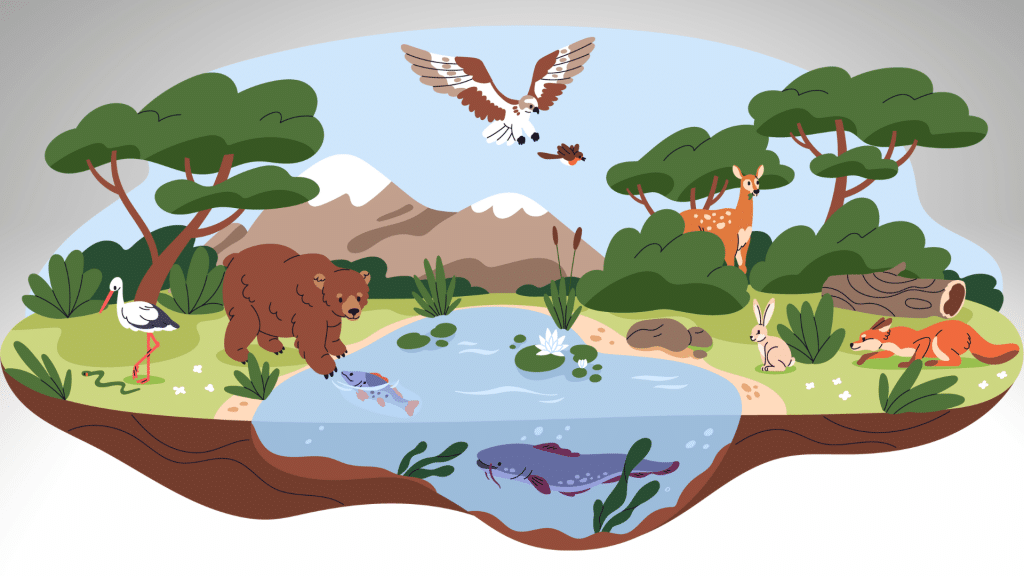When I think of the tropical rainforest, I envision a world alive with plants and animals. These forests are warm, wet, and filled with a greater variety of species than any other ecosystem.
Every living thing in the rainforest depends on others to survive. This connection is best explained through the tropical rainforest food chain.
In this blog, I’ll walk you through how the food chain works step by step. You’ll learn about producers, consumers, and decomposers that keep the cycle going.
I’ll also explain how the rainforest food web links many chains together. This web is what keeps the balance in the rainforest.
What is the Tropical Rainforest Food Chain?
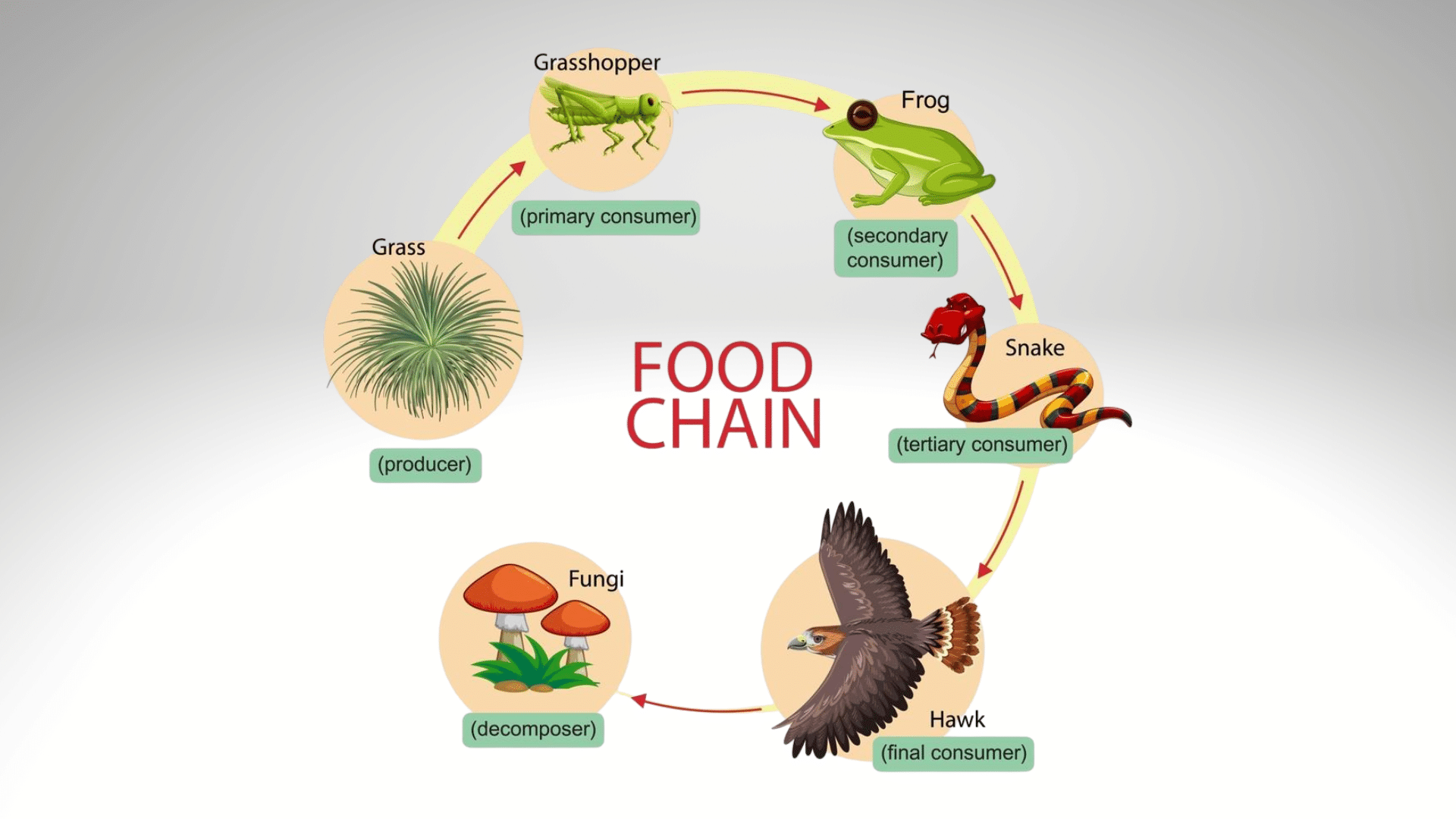
The tropical rainforest food chain shows how energy moves through the ecosystem. It begins with plants, continues through animals, and ends with decomposers.
Plants are the starting point because they make their own food using sunlight, water, and soil nutrients. They provide energy for herbivores.
Herbivores eat plants, while carnivores feed on herbivores. Larger predators control populations and keep balance within the rainforest.
When plants and animals die, decomposers recycle what is left. They turn waste into nutrients that help new plants grow.
A food chain in the rainforest is only one path. Because thousands of species inhabit this area, their paths overlap to form a complex food web within the rainforest.
Levels of the Tropical Rainforest Food Chain
The tropical rainforest food chain has five main levels. Each level plays a distinct role in maintaining the ecosystem’s health and balance.
1. Producers in the Tropical Rainforest
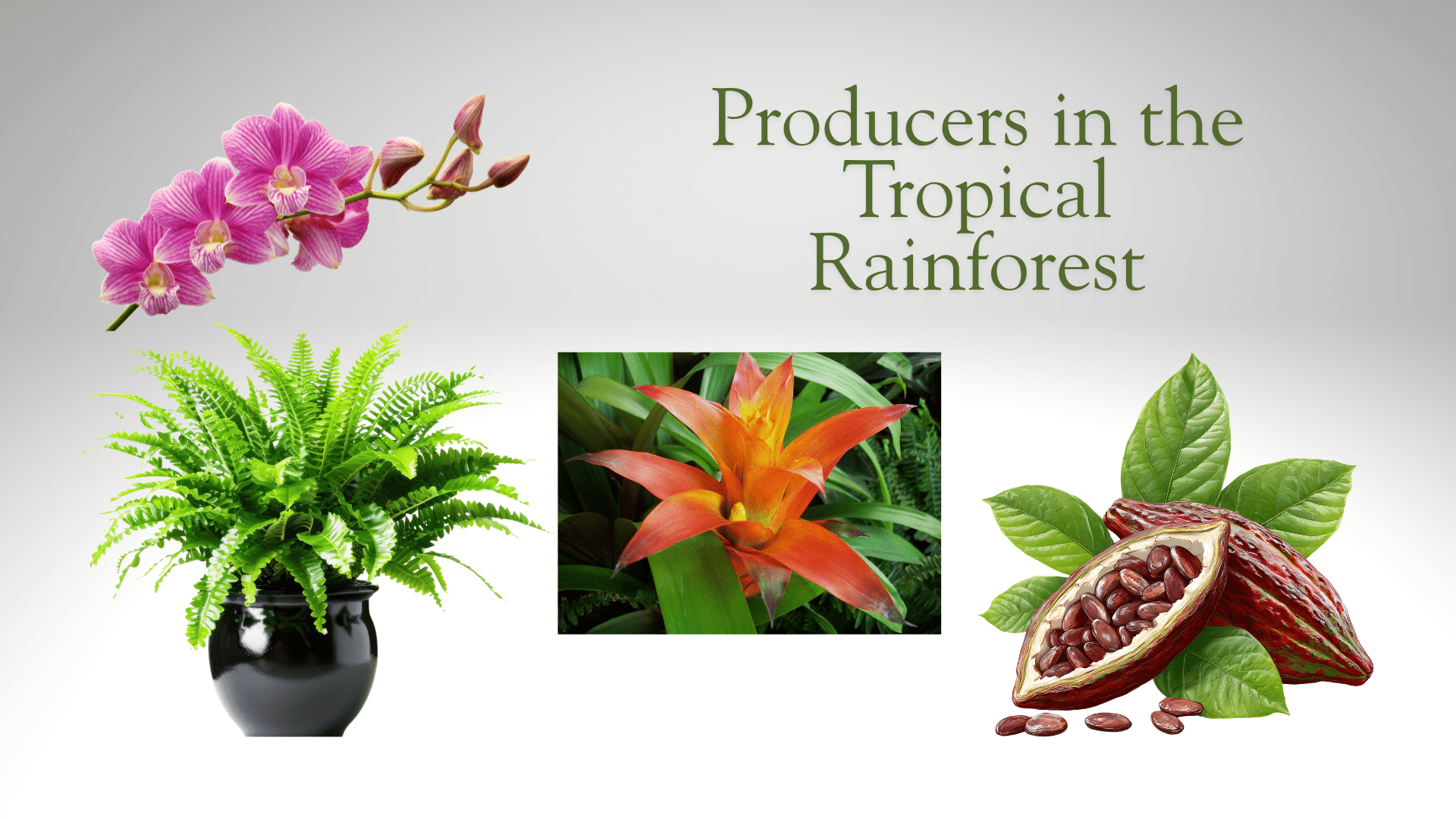
Producers form the base of the food chain because they produce their own food through the process of photosynthesis. They capture energy from the sun and store it in leaves, fruits, and seeds.
Without producers, no other level could survive. They provide the starting energy that supports herbivores and, eventually, all higher consumers.
Examples: Banana trees, cacao trees, orchids, bromeliads, and ferns.
2. Primary Consumers (Herbivores)
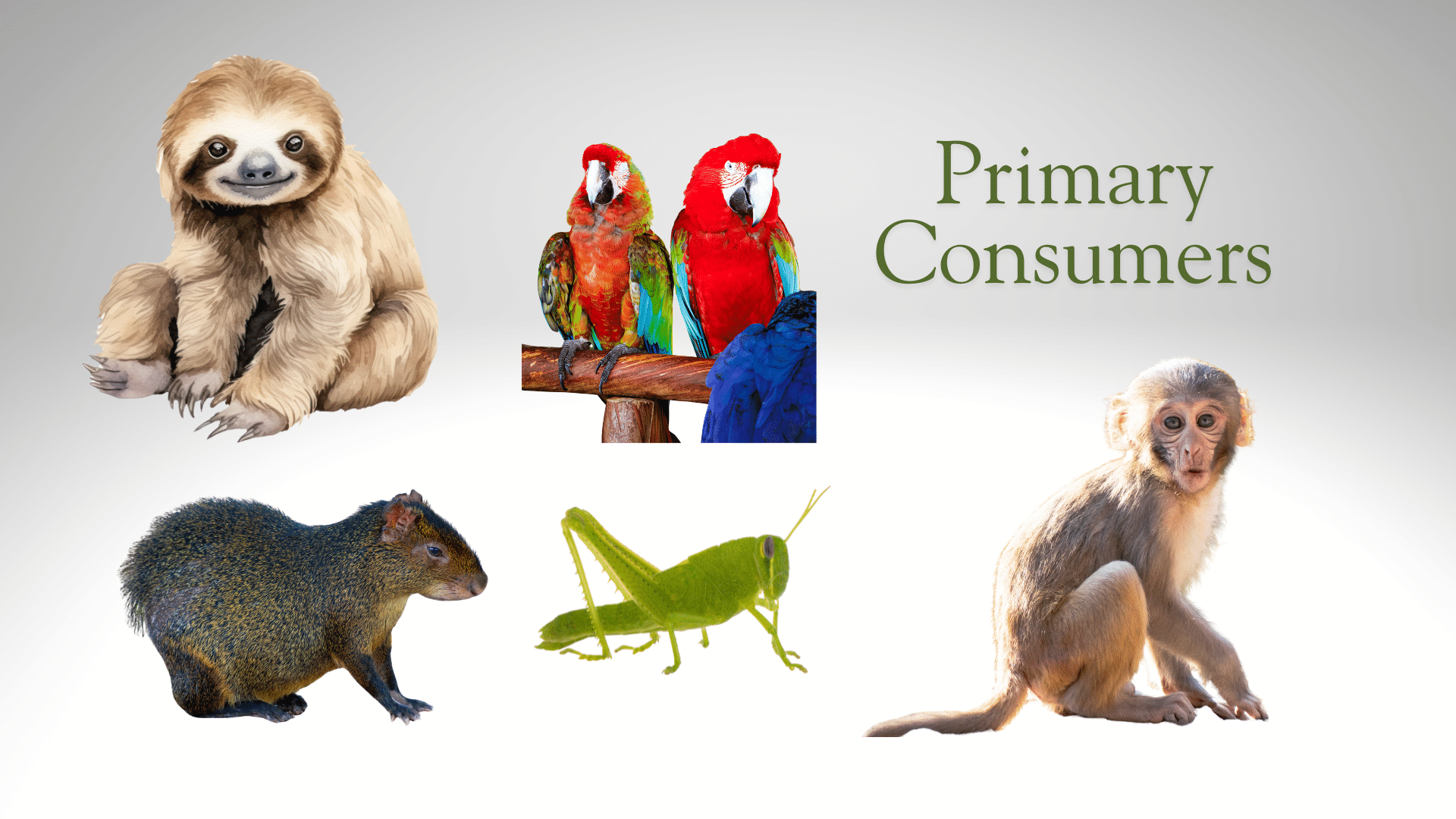
Primary consumers eat the producers. They are mostly herbivores that survive on fruits, leaves, flowers, or seeds.
They transfer the energy from plants to animals higher in the chain. Many also spread seeds, which helps rainforest plants grow.
Examples: Sloths, monkeys, macaws, grasshoppers, and agoutis.
3. Secondary Consumers (Small Carnivores and Omnivores)
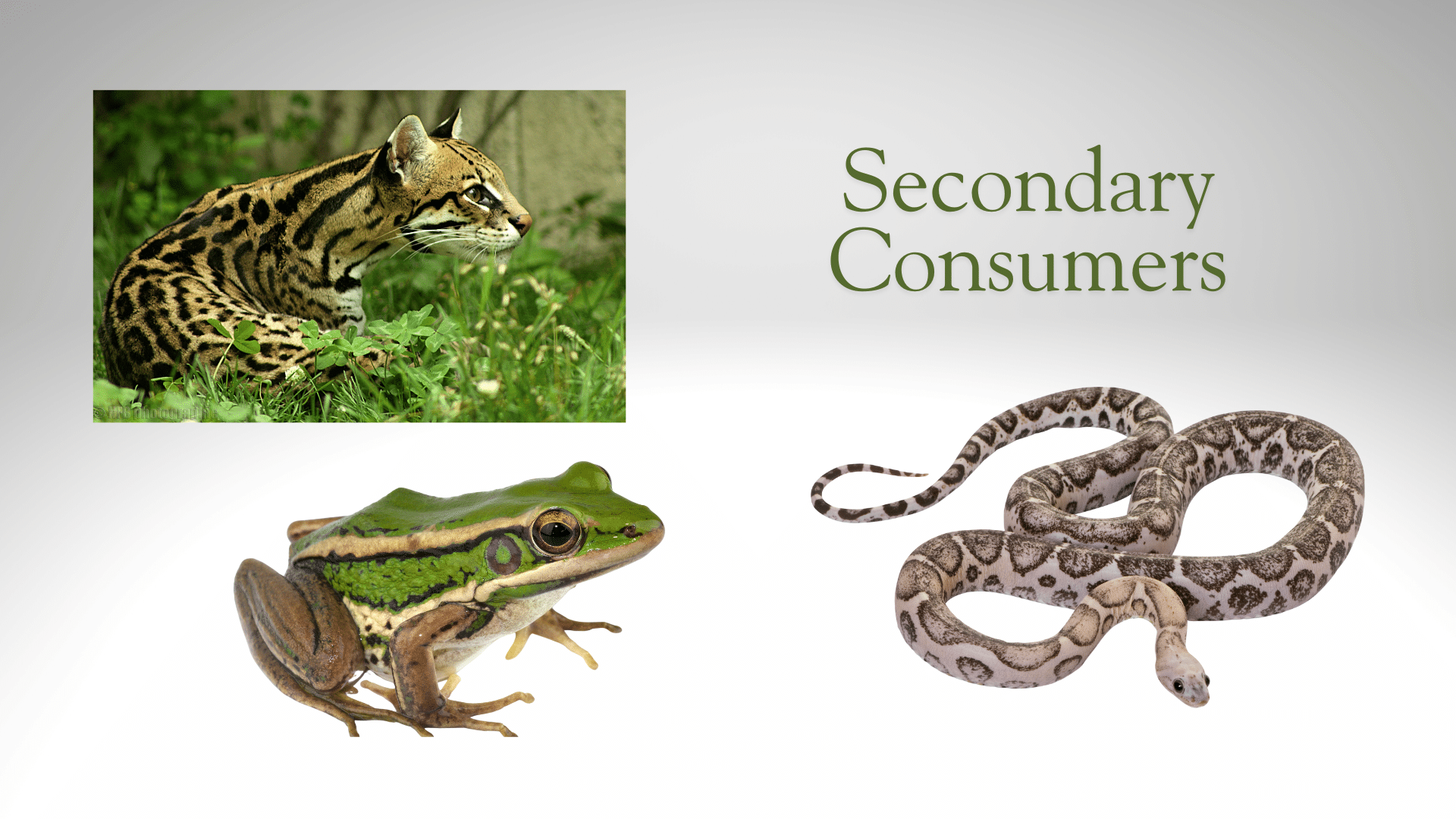
Secondary consumers feed on herbivores. Some are carnivores, while others are omnivores that eat both plants and animals.
They help control herbivore populations, preventing them from overeating plants. This keeps the rainforest balanced.
Examples: Frogs, snakes, ocelots, and small birds of prey.
4. Tertiary Consumers (Top Predators)
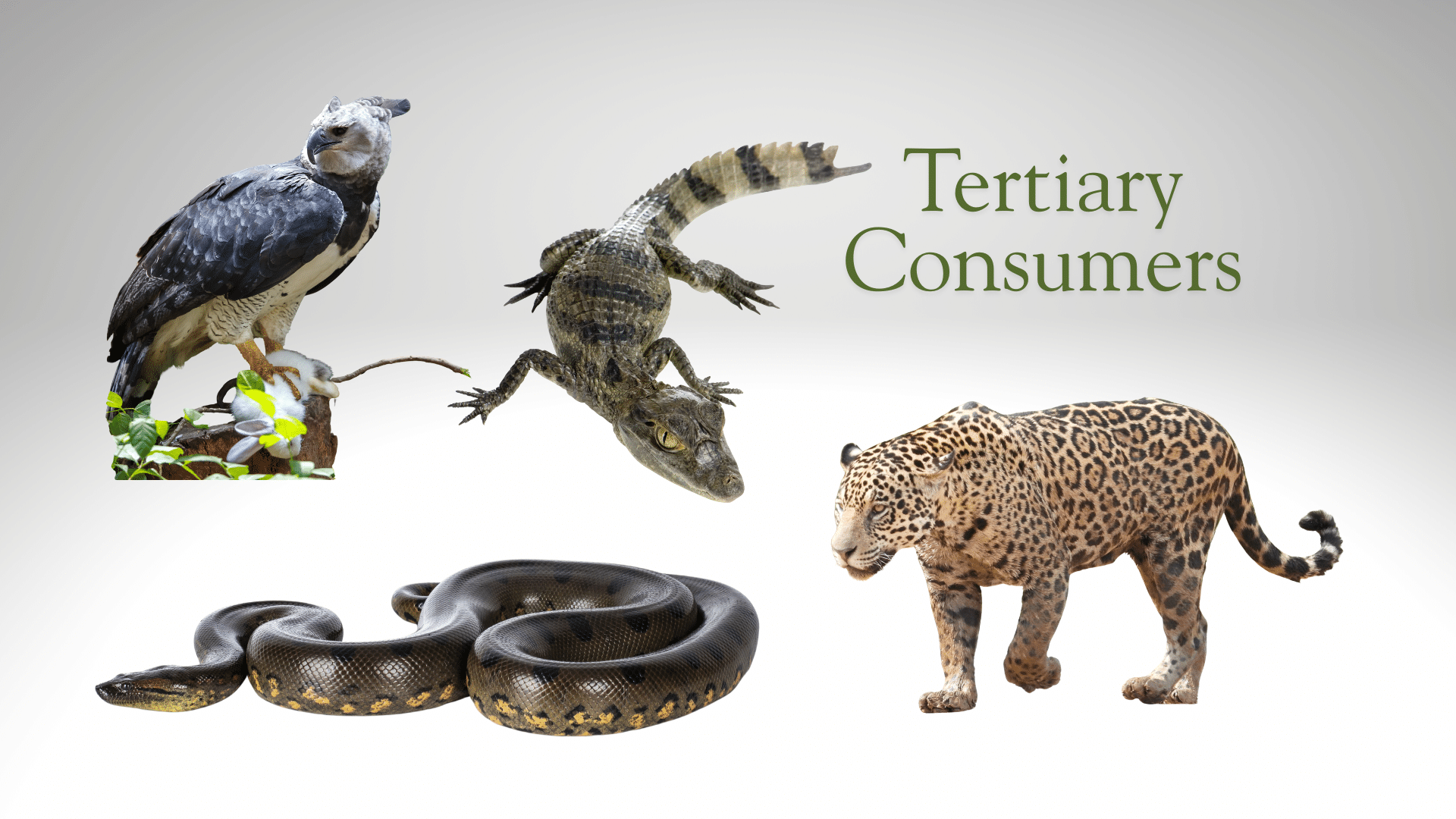
Tertiary consumers are the top hunters in the rainforest. They feed on herbivores and secondary consumers, keeping populations under control.
Most of them have no natural enemies. By occupying the top of the food chain, they maintain ecosystem stability.
Examples: Jaguars, harpy eagles, caimans, and large snakes like anacondas.
5. Decomposers in the Rainforest
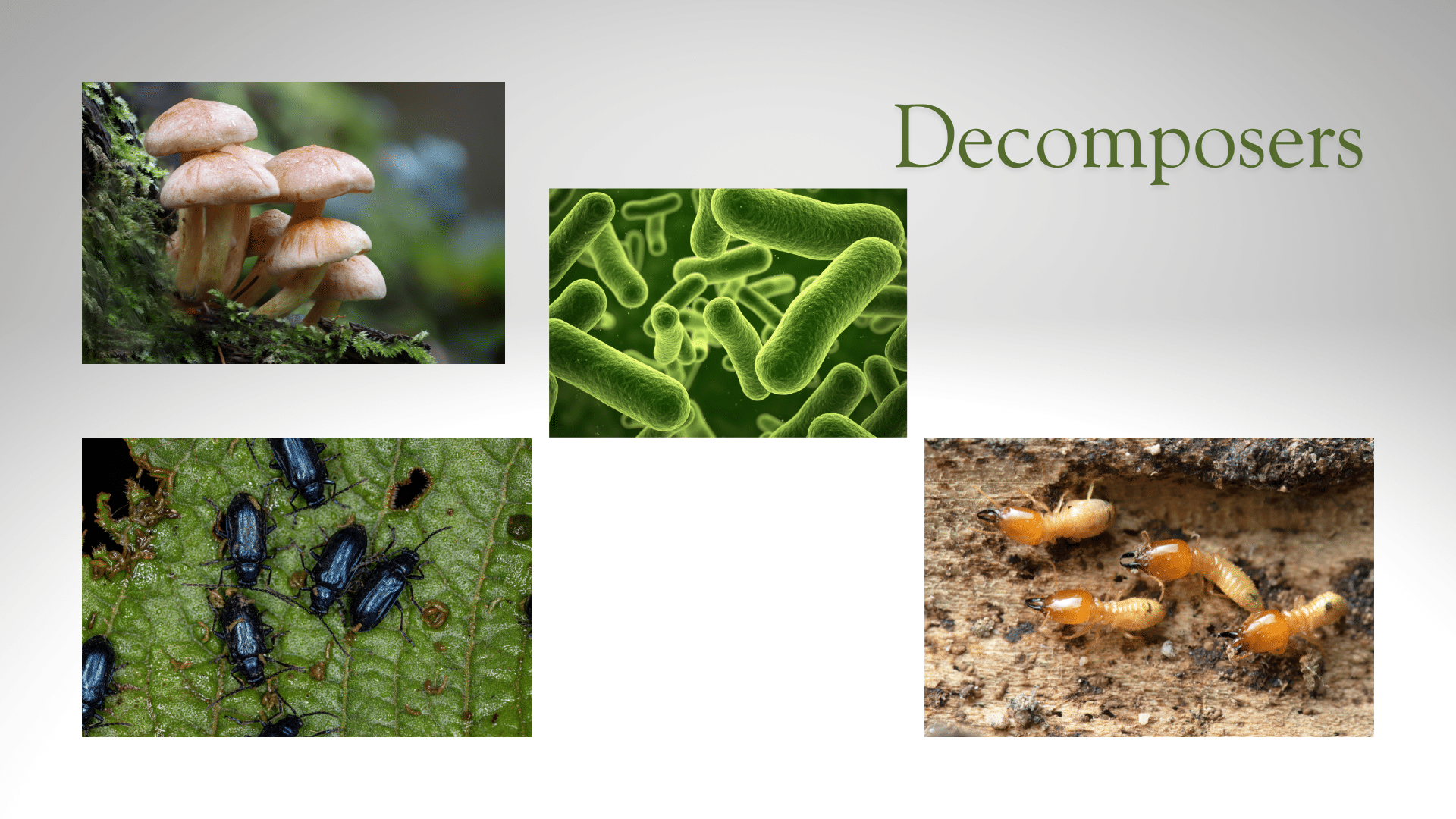
Decomposers finish the cycle by breaking down dead plants and animals. They return nutrients to the soil, which allows new plants to grow.
Without decomposers, the forest floor would accumulate waste and dead material, and plants would not receive the necessary nutrients.
Examples: Fungi, termites, beetles, and bacteria.
Example of a Tropical Rainforest Food Chain
Here’s a simple example to show how energy flows through the tropical rainforest food chain. Each step depends on the one before it.
- Producer: Cacao tree. The cacao tree uses sunlight to make food through photosynthesis. Its fruit provides energy-rich seeds and pulp for animals.
- Primary Consumer: Macaw. A macaw eats the cacao fruit. As a herbivore, it gains energy from the plant while also spreading seeds across the forest.
- Secondary Consumer: Snake. A snake may prey on the macaw or its chicks. By feeding on herbivores, snakes help control bird populations.
- Tertiary Consumer: Harpy eagle. The harpy eagle is one of the most formidable predators in the rainforest. It hunts snakes and other medium-sized animals, thereby maintaining a balanced food chain.
- Decomposer: Fungi. When plants or animals die, fungi break them down into nutrients. These nutrients enrich the soil, enabling new plants, such as the cacao tree, to grow.
This example illustrates a clear path through the rainforest. However, in reality, animals often consume a variety of foods. These overlapping chains create the rainforest food web, a complex network of connections that supports thousands of species.
The Rainforest Food Web
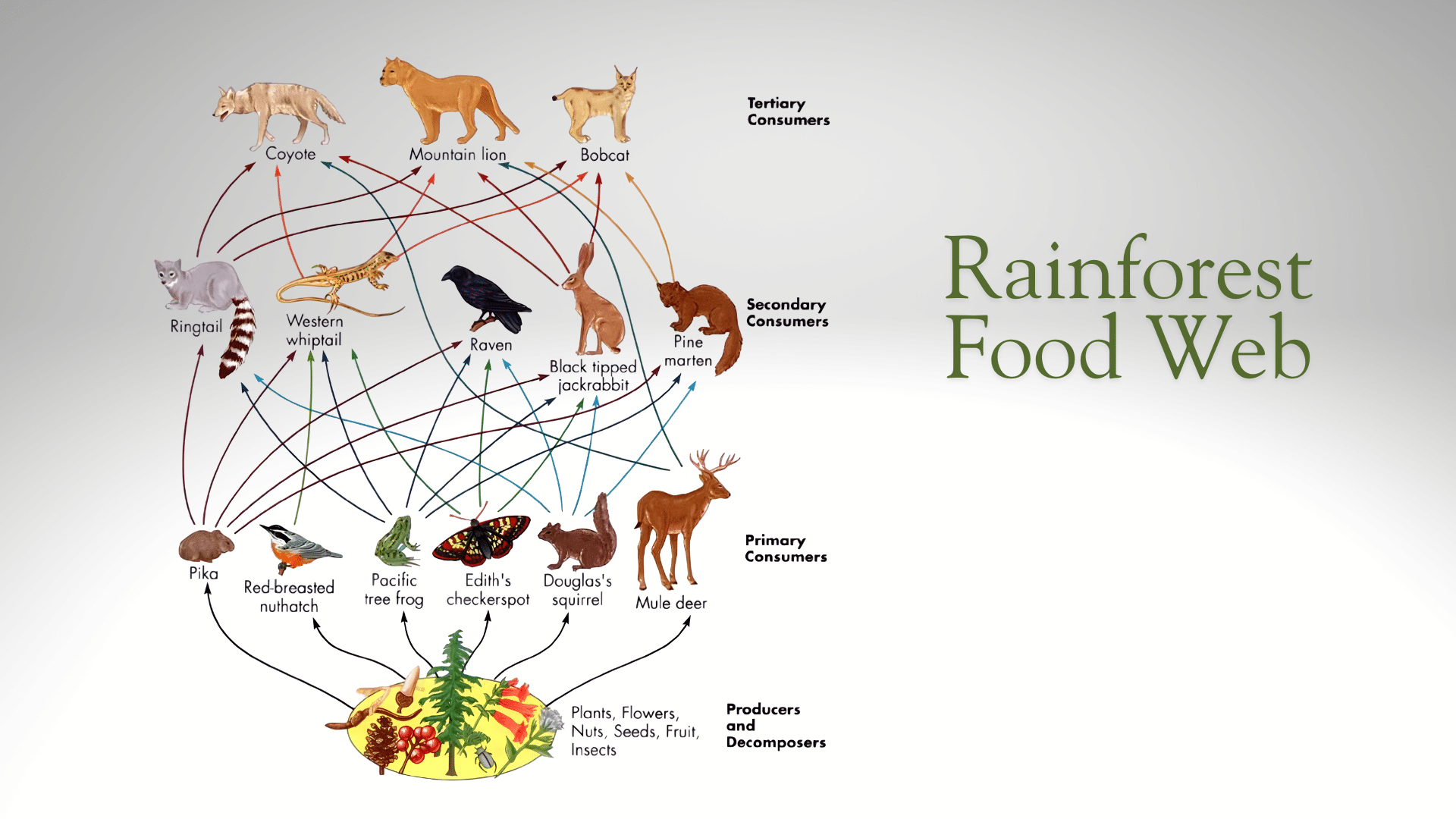
A rainforest food web consists of numerous food chains that are interconnected. It shows the complete set of feeding relationships within the tropical rainforest.
For example, a monkey eats fruit from trees and plants. But it may also become prey for snakes, harpy eagles, or jaguars.
A frog feeds on insects, yet it is also eaten by birds, snakes, or larger mammals. This makes the frog both predator and prey within the web.
In the same way, insects eat leaves, but they are hunted by lizards, bats, and birds. Each species has more than one role.
This web of connections makes the tropical rainforest food chain strong and flexible. If one food source is lost, many animals still have other choices for survival.
Because of this complexity, a food web explains the rainforest ecosystem better than a single chain. It clearly explains how energy flows across multiple paths simultaneously.
Why the Tropical Rainforest Food Chain Matters
The tropical rainforest food chain is more than just plants and animals eating one another. It keeps the entire ecosystem alive, balanced, and functioning.
- Controls Plant and Animal Populations: Predators prevent herbivores from overeating plants. At the same time, herbivores help manage plant growth. This balance keeps the rainforest stable.
- Recycles Nutrients Through Decomposers: When plants and animals die, decomposers break them down. They return nutrients to the soil, which allows new plants to grow and support the next cycle.
- Supports Biodiversity: The food chain and the larger rainforest food web support thousands of species. Each role, from small insects to top predators, contributes to overall diversity.
- Provides Resources for Humans: Tropical rainforests produce oxygen that we breathe. They also supply medicines, fruits, nuts, and materials that humans depend on every day.
- Impact of Rainforest Destruction: When rainforests are cleared, these food chains collapse. Plants and animals lose food, the web weakens, and entire ecosystems may vanish. Protecting them is vital for both wildlife and people.
Conclusion
The tropical rainforest food chain illustrates how plants, animals, and decomposers are interconnected through the flow of energy. Each level, from producers to top predators, plays a vital role.
When I examine examples from the rainforest, I see how every species is part of a larger ecosystem. The rainforest food web makes these connections even clearer, showing how all life is linked.
Protecting tropical rainforests is not only about saving trees and animals. It’s about keeping these food chains strong so the ecosystem can continue to support life across the planet.
If you want to learn more, start by sharing this blog or reading about other ecosystems. Together, we can gain a deeper understanding of these systems and take steps to protect them.


